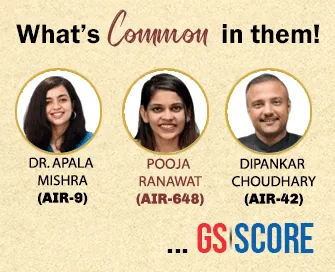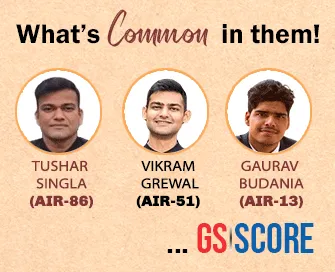

10th June 2025 (10 Topics)
Mains Issues
Context
China imposed export restrictions on seven critical rare earth elements (REEs), impacting global supply chains. This has raised serious concerns for India’s automotive and defence sectors, both of which depend heavily on rare earth magnets sourced from China.
Rare Earth Elements and India’s Supply Chain Vulnerability
1. Understanding Rare Earth Elements (REEs)- What Are They?
- A group of 17 chemically similar elements used in electronics, automotive, defence, medical, and renewable energy sectors.
- Term “rare” refers to the complexity of extraction and refining, not scarcity.
- China’s Dominance
- China holds:
- ~70% of global mining output
- ~90% of global refining and magnet production capacity
- China holds:
- Export Controls
- Export restrictions now apply to seven REEs, including dysprosium and terbium, crucial for manufacturing high-performance magnets.
- Special export licenses required; large numbers of applications remain pending or rejected globally.
- Affected Sectors
- Electric vehicles (EVs), internal combustion components, sensors, and military-grade electronics all rely on REEs.
- These curbs are expected to disrupt manufacturing and innovation
- Short-Term Effects
- Indian automotive production is facing potential delays due to dwindling stocks of rare earth magnets.
- EV production lines and critical vehicle components are under pressure as supply chains tighten.
- Long-Term Strategic Concerns
- India holds fifth-largest global reserves of REEs but lacks industrial-scale processing and refining capacity.
- Current domestic production is monopolized by a single public sector entity, limiting scalability and diversification.
- Immediate Measures
- Diplomatic engagements to secure exemptions or expedite Chinese export licenses.
- Interim alternatives: using ferrite magnets, importing from alternative Tier 2/3 global suppliers, and recycling from retired devices and vehicles.
- Strategic Direction Required
- Building domestic refining and magnet manufacturing infrastructure.
- Facilitating R&D in substitution and material recycling.
- Encouraging foreign collaboration with REE-rich countries like Australia and Africa.
- REEs are critical for missile systems, radars, satellites, and energy-efficient technologies.
- China’s control creates monopoly risk, threatening India’s strategic autonomy.
- The crisis highlights the importance of integrating REE supply chains into the Atmanirbhar Bharat framework.
Way Forward
- Scale up domestic REE exploration and refining, with private sector participation and technology transfer.
- Launch a National Rare Earth Mission to coordinate extraction, processing, magnet production, and R&D.
- Promote rare earth recycling initiatives from end-of-life electronics and vehicles.
- Develop strategic partnerships with REE-rich countries to diversify sources.
- Include REEs under Production Linked Incentive (PLI) schemes to boost domestic capabilities.


Mains Issues
Context
China and Sri Lanka signed two MoUs during the 8th China–Sri Lanka Joint Trade and Economic Commission to deepen bilateral cooperation in trade facilitation and supply chain development, advancing China's Belt and Road Initiative (BRI) in the region.
China–Sri Lanka Ties
1. China as Largest Bilateral Creditor to Sri Lanka- China holds ~52% of Sri Lanka’s bilateral external debt (as of 2024).
- Loans are largely non-concessional and directed at strategic infrastructure (e.g., ports, expressways).
- China invested over USD 12 billion in Sri Lanka during this period.
- Major projects:
- Hambantota Port (leased to China for 99 years in 2017).
- Colombo Port City
- Highways, airports, coal power plants.
- Raises concerns over sovereignty, transparency, and Chinese political leverage.
- Indian Ocean Region (IOR): Key to China’s Maritime Silk Road.
- China seeks to counter US–India naval presence and secure sea lines of communication (SLOCs).
- Builds dual-use infrastructure to support military logistics and civilian trade.
- Countries facing economic distress (like Sri Lanka) may gravitate toward Chinese investment.
- This risks undermining India’s traditional sphere of influence.
- Lack of viable alternatives makes Chinese funding attractive despite geopolitical trade-offs.
- Opposition to SAGAR Initiative
- China’s “Forum for Indian Ocean Island Countries” runs counter to India's SAGAR Doctrine.
- Undermines India’s vision of inclusive and cooperative maritime governance.
- Strategic Encirclement – Strings of Pearls Strategy
- Network of Chinese-funded ports and bases around India (Gwadar, Hambantota, Kyaukpyu).
- Aims to project Chinese naval power and encircle India geopolitically.
- Dual-Use Ports: Security Concerns
- Hambantota Port and Colombo Port City may support Chinese military docking, surveillance, and intelligence gathering.
- Potential for a permanent Chinese naval presence in the IOR.
- Influence in India’s Neighbourhood
- Nepal, Bangladesh, Maldives increasingly engaging China for:
- Infrastructure funding.
- Connectivity (railways, roads, bridges).
- Digital and power sector projects.
- Raises the need for India to counterbalance via Neighbourhood First Policy and Project Mausam/SAGAR.
- Nepal, Bangladesh, Maldives increasingly engaging China for:
Belt and Road Initiative (BRI)1. Overview of BRI
2. Key Components
3. India’s Concerns Regarding BRI
4. India’s Countermeasures
|


Prelims Articles
Context
Scientists at CSIR-IHBT, Palampur reported the first flowering and seed setting of heeng (Ferula assa-foetida) in India, confirming successful acclimatisation and reproductive cycle completion, marking a historic milestone in the indigenous cultivation of heeng after decades of import dependence.
Heeng (Asafoetida)
1. Botanical and Ecological Details:- Botanical Name: Ferula assa-foetida
- Family: Apiaceae
- Type: Perennial herb, native to Iran, Afghanistan, Central Asia.
- Resin: Extracted from taproot and rhizome (oleo-gum resin).
- Climate Suitability: Cold, arid climates; sandy, well-drained soils; rainfall ?300 mm; temp range: 10–20°C (can tolerate –4°C to 40°C).
- India was the world’s largest consumer but entirely dependent on imports from Afghanistan, Iran, and Uzbekistan.
- Imported value: Estimated at over 900 crore annually.
- Launched by CSIR-IHBT, Palampur with support from ICAR-NBPGR and of Himachal Pradesh.
- First heeng seedling planted on October 15, 2020, in Kwaring village, Lahaul Valley.
- Breakthrough achieved in seed import, dormancy protocols, and ecological mapping.
- High-altitude regions: Lahaul-Spiti, Kinnaur, Kullu, Chamba.
- Mid-hill areas: Mandi (e.g., Janjheli).
- A Heeng Germplasm Resource Centre was inaugurated on March 5, 2022 at IHBT Palampur.
- Tissue culture propagation for mass-scale production.
- Ecological niche modelling used for site selection.
- Reduces import burden, supports Atmanirbhar Bharat.
- Opens agro-climatic frontiers and income opportunities for Himalayan farmers.
- Promotes traditional and Ayurvedic uses as recommended in Charaka Samhita and other ancient texts.


Prelims Articles
Context
A sustainable and climate-resilient rural water conservation project using farm ponds has been implemented in Kukas village, Jaipur (Rajasthan). Spearheaded by IIT Kharagpur alumnus Vipra Goyal, the initiative aims to harvest 10 crore litres of monsoon runoff using 50 scientifically designed, plastic-lined ponds, enhancing irrigation, groundwater recharge, and farmer livelihoods.
1. Water Conservation Model
- A rural water harvesting model using scientifically designed, plastic-lined farm ponds in Kukas village, Jaipur.
- Designed to capture 10 crore litres of seasonal monsoon runoff.
- Groundwater over-extraction in Jaipur: 22 times the recharge rate annually.
2. Climate Resilience
- Farm ponds offer a viable and scalable climate-adaptive solution in arid regions with no river/canal networks.
- Can help in groundwater recharge, mitigating droughts, and climate-proofing agriculture.
3. Agricultural Impact
- Supports year-round irrigation for both Rabi and Kharif crops.
- Promotes crop diversification into high-value horticulture and fodder crops.
- Enables revival of livestock rearing and enhances agro-economy.
4. Institutional and Public Participation
- Initiative led by IIT alumnus Vipra Goyal and supported by private sector CSR funding.
- Community participation through gram sabhas and awareness campaigns strengthens local governance.
Water Conservation Methods in India:Rajasthan and Gujarat
Himalayan & Northeastern Regions
Other Regions
|


Prelims Articles
Context
The Delhi government is setting up India’s first e-waste Eco Park in Holambi Kalan to scientifically manage and recycle electronic waste. Spanning 11.4 acres, the park aims to process 25% of Delhi’s e-waste, promote circular economy practices, and create green jobs.
Delhi E-Waste Eco Park:
- Location: Holambi Kalan, Delhi
- Area:4 acres
- Annual Capacity: 51,000 metric tonnes of e-waste
- Categories Covered: All 106 notified under E-Waste (Management) Rules, 2022
- Project Model: DBFOT (Design, Build, Finance, Operate, Transfer) under Public-Private Partnership (PPP)
- Timeline: 18 months for completion
- Concession Period: 15 years
Policy & Governance Framework
- Guided by: E-Waste (Management) Rules, 2022
- Managed by: Delhi State Industrial and Infrastructure Development Corporation (DSIIDC)
- Technological Partners: To be selected via global RFQ-cum-RFP
- Objective: Circular economy promotion, formalisation of informal sector, resource recovery
Environmental and Socio-Economic Impact
- India’s Global Rank: 3rd largest e-waste producer (1.6 million MT annually)
- Delhi's Share: ~9.5% of India’s e-waste
- Recycled E-waste (Global Average): 17.4%
- Park's Role: Model facility to inspire replication, empower informal recyclers, generate green jobs, and improve environmental health
E-Waste (Management) Rules, 2022Extended Producer Responsibility (EPR)
Product Coverage Expanded
Role of Bulk Consumers
Authorized Stakeholders
|


Prelims Articles
Context
The Indian Army is set to acquire three regiments of the indigenously developed Quick Reaction Surface-to-Air Missile (QRSAM) systems, amounting to an estimated ?30,000 crore. The Defence Ministry is likely to approve the proposal soon. This development follows the operational success of Indian air defence forces during Operation Sindoor, amidst heightened aerial threats from Pakistan and China.
Quick Reaction Surface-to-Air Missile (QRSAM):
Purpose & Significance
- Developed by DRDO for the Indian Army.
- Designed to protect mobile armoured units against aerial threats like aircraft, helicopters, UAVs, and precision-guided munitions.
- Ensures quick reaction time in dynamic battlefield scenarios.
Canister-Based System
- Advantages:
- Provides controlled environment for the missile, enhancing shelf life.
- Simplifies transportation and launch readiness.
- Enables cold launch capabilities with faster deployment.
Radar and Tracking Features
- Equipped with:
- Active Array Battery Surveillance Radar (AABSR).
- Active Array Battery Multifunction Radar (AABMFR).
- Both radars offer:
- 360-degree coverage.
- Search-on-the-move and track-on-the-move functions.
- Supports simultaneous detection and tracking of multiple targets in real-time.
Missile Features
- Range: 25–30 km.
- Propulsion: Single-stage, solid-fueled.
- Navigation:
- Mid-course Inertial Navigation System (INS).
- Two-way data link for in-flight updates.
- Terminal active radar seeker for precise end-game targeting.
Mobility & Deployment
- Mounted on mobile platforms – ensures protection during movement of troops.
- Enables shoot-and-scoot tactics to avoid counter-strikes.
- Entire system is highly compact, allowing fast redeployment.
Automation & Command System
- Fully automated Command and Control (C2) system.
- Capable of integration with other air defence systems for layered defence architecture.
Strategic Importance
- Enhances India’s tactical air defence
- Boosts indigenization and self-reliance under the Atmanirbhar Bharat


Prelims Articles
Context
Starlink, operated by Elon Musk’s SpaceX, has officially secured the Global Mobile Personal Communication by Satellite (GMPCS) licence from the Indian government in June 2025. This regulatory clearance enables it to commence commercial satellite-based internet services across India, marking a significant shift in the country's digital communication landscape.
What is Starlink?
- Starlink is a satellite-based internet service provider operated by SpaceX, utilizing a constellation of over 7,600 small satellites in Low Earth Orbit (LEO).
- It offers high-speed, low-latency broadband globally, including remote and rural areas with limited access to conventional broadband.
What is GMPCS?
- The Global Mobile Personal Communication by Satellite (GMPCS) licence is issued by India’s Department of Telecommunications (DoT).
- It allows satellite companies to offer voice and data services through non-terrestrial networks such as satellites.
Implications for India:
- Digital Inclusion: Starlink can bridge the rural-urban digital divide by providing internet access to remote regions where fibre or tower infrastructure is unviable.
- Competition: Poses a competitive challenge to domestic players like Bharti Airtel (OneWeb) and Reliance Jio (Jio Satellite).
- Tech Sovereignty Concerns: Starlink’s entry raises strategic questions about data privacy, licensing norms, and national security.
- Innovation in Delivery: Encourages satellite-based internet as an emerging mode of digital infrastructure in India’s Digital India mission.
Regulatory Path Ahead:
- Starlink still requires spectrum allocation from India’s telecom regulator and must comply with local laws, including data localisation and security protocols.
- Coordination with ISRO and Indian space policy may be required to avoid orbital congestion and signal interference.
PYQ:Q. With reference to communication technologies, what is/are the difference/differences between LTE (Long-Term Evolution) and VoLTE (Voice over LTE)? (2020)
Select the correct answer using the code given below:
|


Editorials
Context
The United Nations General Assembly has declared 2026 as the International Year of the Woman Farmer, with support from over 100 countries. This global recognition comes amid growing attention to the challenges women face in agriculture, including land rights, market access, and climate vulnerability. Insights from India’s ENACT project in Assam and a six-month multi-stakeholder symposium reveal policy and grassroots solutions.
Empowering Women Farmers: Towards Climate-Resilient and Equitable Agriculture
- Women in Agriculture – Role, Gaps, and Inequality
- Critical Contribution to Food Production: Women contribute 60–80% of food production in developing nations and make up 39% of South Asia’s agricultural workforce, yet they remain under-recognised and unsupported.
- Ownership Inequities and Limited Access: In India, although 80% of economically active women work in agriculture, only 14% of landowners are women (NFHS puts this even lower at 3%), limiting their access to credit and resources.
- Structural Gaps in Financial and Technological Access: Women face barriers in accessing credit, mobile-based advisory services, and technological tools—hampering productivity and long-term investment in agriculture.
- Government Interventions and Climate-Resilience Initiatives
- Targeted Schemes for Support: Schemes such as the Mahila Kisan Sashaktikaran Pariyojana, Sub-Mission on Agricultural Mechanisation, and the National Food Security Mission provide 50–80% subsidies and reserve 30% of funds for women farmers.
- ENACT Project in Assam: Implemented by WFP and Government of Assam, ENACT equips women with climate-resilient technologies, weekly advisories, and links to expert guidance through Climate Adaptation Information Centres in 17 villages.
- Technology-Driven Community Solutions: The project promotes flood-resistant rice, smart seed systems, and diversified farm-based livelihoods with help from meteorology departments, agricultural universities, and rural missions.
- Forward Path – Policy, Data, and Institutional Support
- Gender-Specific Policy Frameworks Needed: Granular, gender-disaggregated data must inform policy tools ranging from farming equipment design to credit systems suited to women’s needs.
- Strengthening Women’s Agri-Value Chains: Boosting women-managed agri-value chains and enabling access to finance, markets, and networks such as SHGs can drive sustainable development.
- Leveraging 2026 for Global Momentum: The International Year of the Woman Farmer (2026) provides a unique platform to institutionalise gender equity and build resilient, inclusive food systems.
Practice Question:
Q. “Recognising the vital role of women in agriculture, evaluate the key challenges they face in terms of ownership, access, and climate vulnerability. Suggest policy measures for ensuring inclusive and sustainable development of women farmers.”


Editorials
Context
The 2027 Census, delayed from 2021, will be India’s first fully digital census and a crucial basis for parliamentary delimitation, caste enumeration, and resource allocation. It coincides with the Sixteenth Finance Commission's review, potentially reshaping India’s political and fiscal landscape.
Census 2027 and the Political Reconfiguration of India: Demography, Representation, and Federal Dynamics
- Demographic Counting as Political Instrument
- Constitutional Mandate for Redistribution: The next inter-State parliamentary representation will be based on the population figures of the first census after 2026, as mandated by Article 81 of the Constitution.
- Digitization and Acceleration of Census Processes: For the first time, all Census data will be digitally collected, enabling faster tabulation and possibly advancing the 2029 general elections under a newly delimited parliamentary map.
- Impact on Political Power Balance: If population becomes the sole criterion for seat reallocation, states with higher birth rates but lower economic growth (e.g., BIMARU states) will gain power at the cost of economically advanced states with declining populations.
- Socio-Political Consequences of the Caste Census
- Full-scale Caste Enumeration After 1931: For the first time post-Independence, all castes will be counted, unlike the existing practice of only enumerating SCs and STs, potentially intensifying claims for quota revisions.
- Implications on Reservation Cap: The caste census is expected to trigger demand for revisiting the 50% ceiling on reservations, especially amid rising political mobilization on caste lines.
- Women’s Reservation and Simultaneous Elections: The upcoming delimitation will incorporate the 33% reservation for women in Lok Sabha and State Assemblies and may also facilitate simultaneous elections, as envisioned by the Centre.
- From Population to People — Political Identity and Governance
- Demography as Political Identity: The census plays a pivotal role in transforming a population into a political community ("the People") — impacting governance, identity formation, and resource allocation.
- Revenue Sharing and Federal Tensions: The Sixteenth Finance Commission, reporting in 2025, will determine revenue sharing, and its timing alongside Census 2027 may reignite inter-State fiscal tensions (especially South vs. North).
- Strategic Political Use by Stakeholders: Population-based delimitation and caste census are being strategically employed to consolidate demographic advantages and mobilize regional and backward-class support, reflecting a broader trend of aligning electoral strategies with evolving socio-political demographics
Practice Question:
Q. "The delayed decadal census in India has implications that go far beyond data collection. Critically examine how Census 2027 could reshape the political and federal architecture of the country, especially in the context of parliamentary delimitation, caste enumeration, and fiscal federalism."

Editorials
Context
Allegations of irregularities during the 2024 Maharashtra Assembly elections have brought electoral transparency under scrutiny. Key concerns include sharp increases in voter rolls, questionable polling trends post-5 p.m., and restricted access to polling-related CCTV footage. These developments underscore the need for urgent reforms in electoral processes and institutional practices.
Need for Electoral Transparency and Institutional Accountability in India’s Voting Process
- Concerns Regarding Voter Roll Inconsistencies
- Abnormal Voter Increase: Over 39 lakh new voters were added within six months between the general and Assembly elections in Maharashtra, raising concerns about the robustness of electoral roll updates.
- Historical Precedent: Similar surges were observed before the 2014 elections, suggesting a recurring pattern that warrants deeper institutional scrutiny and timely release of voter data.
- Need for Verifiability: The Election Commission of India (ECI) should publish machine-readable electoral roll data to enable cross-verification by stakeholders and enhance trust in the system.
- Turnout Anomalies and Technical Clarifications
- Post-5 PM Voting Claims: Allegations of unusually high turnout after 5 p.m. are not supported by final ECI data; such claims are based on provisional numbers that are subject to manual entry errors.
- Limitations of Provisional Data: Turnout figures shared via the ECI’s app are manually inputted and can differ from final machine-verified Form 17C data, which should be considered the authoritative source.
- Delays in Final Data Release: The lag in publishing authenticated booth-wise turnout data creates space for misinformation and speculation; real-time dissemination mechanisms need strengthening.
- Institutional Gaps and Recommendations
- Restricted Access to CCTV Footage: Amendments to the Conduct of Election Rules, 1961, have limited the ability of stakeholders to scrutinize polling activities, affecting transparency and grievance redressal.
- Concerns Over Appointment Process: The procedure for appointing Election Commissioners remains contentious, with non-implementation of a 2023 Supreme Court recommendation involving the judiciary in the selection panel.
- Call for Participatory Electoral Roll Management: Electoral roll revisions should involve active stakeholder engagement and third-party verification, shifting from reactive complaints to proactive oversight.
Practice Question:
Q. "Discuss the institutional challenges faced by the Election Commission of India in ensuring electoral transparency and integrity. Suggest reforms to enhance public trust in the electoral process."




